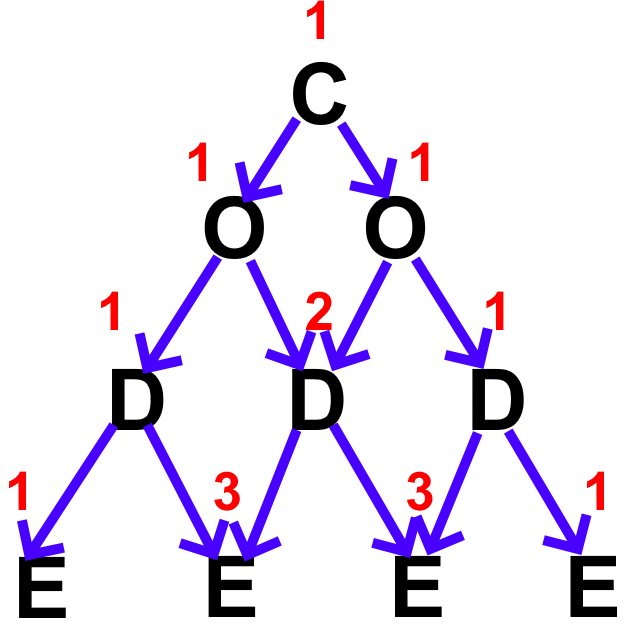Applying Pascal's Method
Pascal's Triangle is a powerful tool in combinatorics, probability, and algebra. In this lesson, we will apply Pascal's Method to solve various practice questions and word problems that involve binomial expansion, counting paths, and probability.
Practice Questions
\( \binom{6}{2} \)
We
Using Pascal's Triangle, we get the following:
\(\binom{6}{2} = \cfrac{6!}{2!(6-2)!}\)
\(= \cfrac{6!}{2!4!}\)
\(= \cfrac{6 \times 5}{2 \times 1}\)
\(= 15\)
Therefore, we can determine the value using Pascal's Triangle is 15.
\(\binom{8}{3} \)
The sum of the elements in row 6 of Pascal's Triangle.
Using Pascal's Triangle, we get the following:
Therefore, we can determine the value using Pascal's Triangle is 56.
Pascal's Triangle row 6: 1, 5, 10, 10, 5, 1
Therefore, we can determine the sum of elements in row 5 of Pascal's Triangle is 32.
Binomial Expansion using Pascal's Triangle
\((x + y)^3\)
Using the 4th row, we get:
\( (a - b)^4 \)
Using the 4th row, we get:
Word Problems
We can determine the answer by using Pascal's Triangle. Looking at row 5 of Pascal's Triangle:
So, the total number of generations is:
Therefore, we can determine that by generation 5 there will be 32 ancestors.

A person starts at the top letter C and moves downward, choosing to step diagonally left or right at each level. How many unique paths spell the word CODE?
Starting at the top, record the number of possible paths moving diagonally to the left and right as you proceed to each different letter. By following Pascal's Triangle's path-counting method, we can develop the following path:

Each letter's value is the sum of the two paths leading to it. Assigning values from Pascal's Triangle, the number of paths leading to each E is 6.
Therefore, Summing the paths at the last row gives us:
Therefore, we can determine there are 8 unique paths that can spell the word CODE.